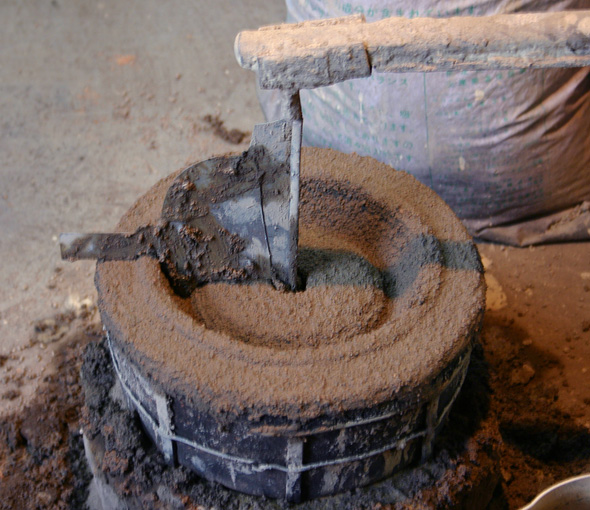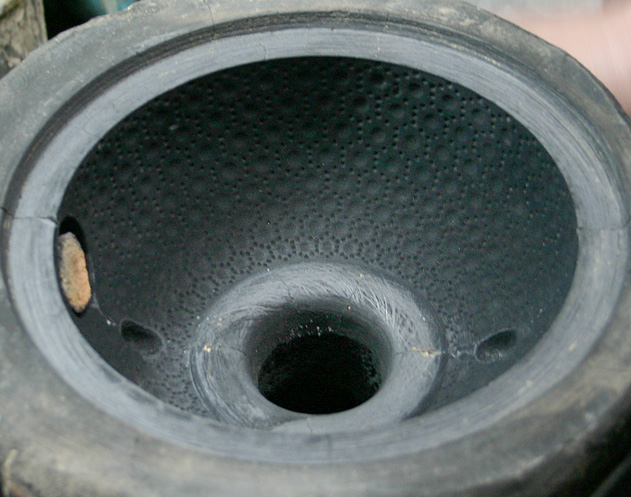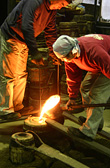Creating a Cast Iron Tetsubin Kettle
Video: The casting process of Nambu-tekki kettles (Iwachu Cast Iron Works)
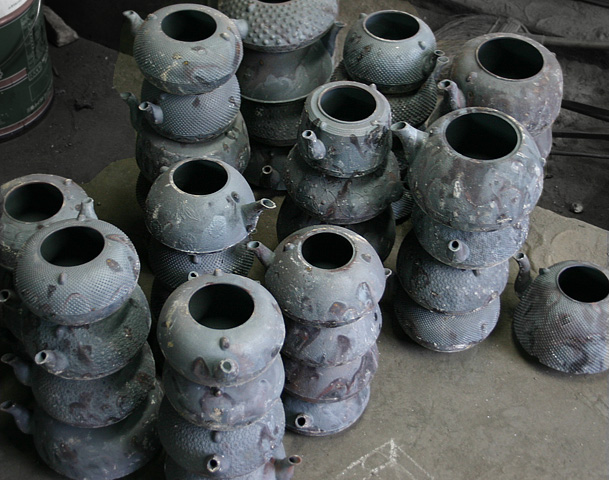
Kettles stacked after the oxidisation process. (photo: Kunzan Workshop) |
Once the metal has hardened, the molds are removed and the kettles are cleaned.
Each mold has to be repaired after almost every use and can only be used about 3–5 times (1–2 times for delicate designs).
Broken molds are not discarded but reprocessed for reuse. Charcoal is heated to a temperature of 800°C (426°F) and the kettles are steam-baked for 30–40 minutes, resulting in an oxidized coating that helps protect against rust. |

Finishing touches by an experienced craftsman. (photo: Kozan Workshop) |
A pot is heated to 250°C and urushi lacquer is applied with a straw brush, giving the kettle a glossy sheen. Afterwards, iron stain (ferric tannate) is applied to achieve the matte finish. |
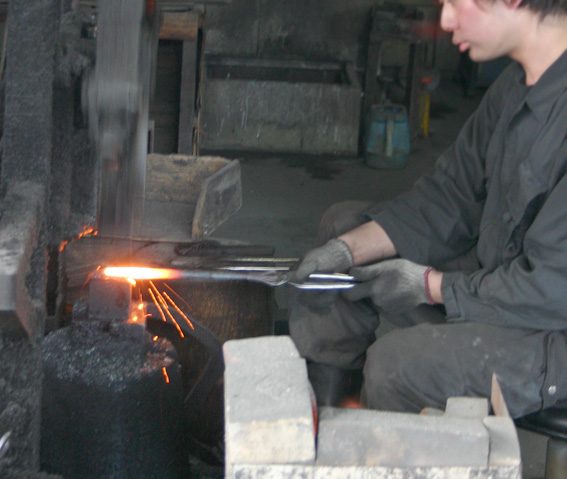
Hammering sounds echo around the workshop. (photo: Tanaka Tsuru Blacksmith) |
The kettles are completed with the application of a handle made at a special workshop. The most difficult handles to make are hollow — created by pounding and curling iron sheets inward. These handles are prized as they are light and stay cooler than solid ones, typically used on higher-end models (approx. over US$700). |
The creation of one cast iron kettle consists of over 80 processes,
all of which must be mastered by young craftsmen learning while they work.
Today’s workshops continually strive to create pieces relevant to modern lifestyles while staying true to traditional roots. This introduction was compiled based on visits to workshops in the Morioka area; some processes may vary slightly between craftsmen.
Today’s workshops continually strive to create pieces relevant to modern lifestyles while staying true to traditional roots. This introduction was compiled based on visits to workshops in the Morioka area; some processes may vary slightly between craftsmen.
